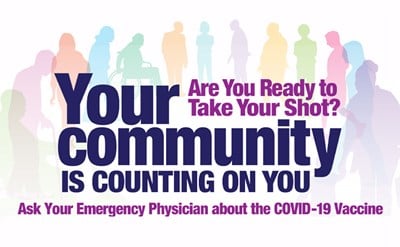WASHINGTON, D.C.—A significant methodologic flaw resulted in the elimination of the majority of submitted charges for internists in a study that compares emergency medicine with internal medicine, according to the American College of Emergency Physicians (ACEP) in response to an article recently published in JAMA Internal Medicine.
"The authors stated that they analyzed services solely performed in hospital settings, thus excluding the largest source of internist charges—those billed for office visits," said Dr. Rebecca Parker, president of ACEP. "Internists can set their office visit charges at any level, and this would not be captured. The data should be rerun to include all office visit claims for the affected internists."
In addition, Dr. Parker said that Medicare is not an accurate benchmark for determining "fair market value," one of the study's faulty assumptions.
"By defining charges greater than Medicare as "excessive" and a "markup," the authors reveal an inherent bias," said Dr. Parker. "Medicare does not reflect actual costs and has not kept pace with inflation. Medicare physician payments decreased by nearly eight percent in the past 11 years, and Congress further reduced payments to fund other legislation (PAMA and ABLE), as well as continued a two-percent reduction under the sequester."
Dr. Parker also said that internal medicine is not comparable with emergency medicine, in part because of the significant amounts of uncompensated care and undercompensated care provided by emergency departments, which is mandated by a federal law (EMTALA) that requires hospital emergency departments to care for all patients, regardless of ability to pay.
"Emergency physicians provide more medical care for the poor and uninsured than any other physician," said Dr. Parker. "Comparing internal medicine with emergency care is basically a meaningless comparison. It would have been better to compare internal medicine with the internal medicine sub-specialties and other subspecialists who can pick and choose who they see."
In addition, emergency physicians charge everyone the same, based on the services provided. Emergency medicine bill collections are lower than any other specialty, with many emergency physicians collecting less than 20 percent of what they bill.
"Emergency physicians treat every patient equally based on their need, not finances," said Dr. Parker. "Most emergency physicians have no idea what insurance coverage a patient has. They uniformly submit identical charges, per CPT code, to all payers, some internists alter their fee schedule to correspond with the expected payment from the involved payers."
Dr. Parker also expressed concerns that some health insurance companies were implementing policies not to cover emergency care.
"We have seen this in Missouri and Texas, and it's a violation of the federal law known as the prudent layperson standard," said Dr. Parker. "These kinds of policies mean that patients experiencing emergencies may not go to the ER because of fear of a bill, and could die as a result. People should never delay seeking emergency care out of fear of the costs, and insurance coverage should be based on a patient's symptoms, not final diagnosis."
 American College of Emergency Physicians
American College of Emergency Physicians







